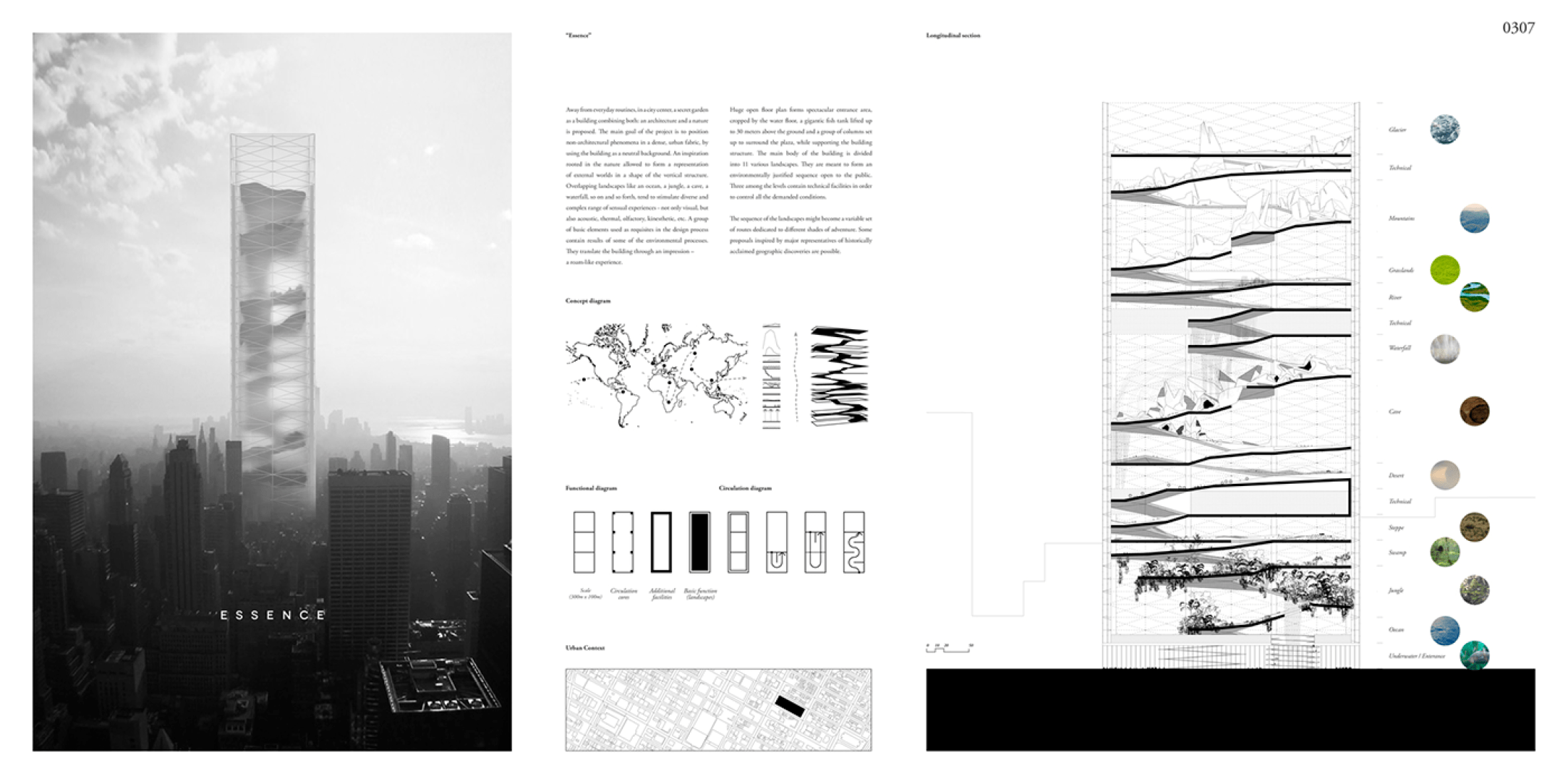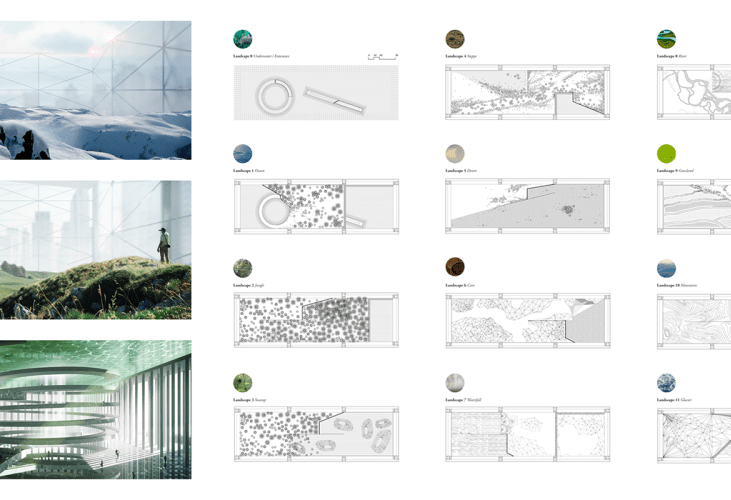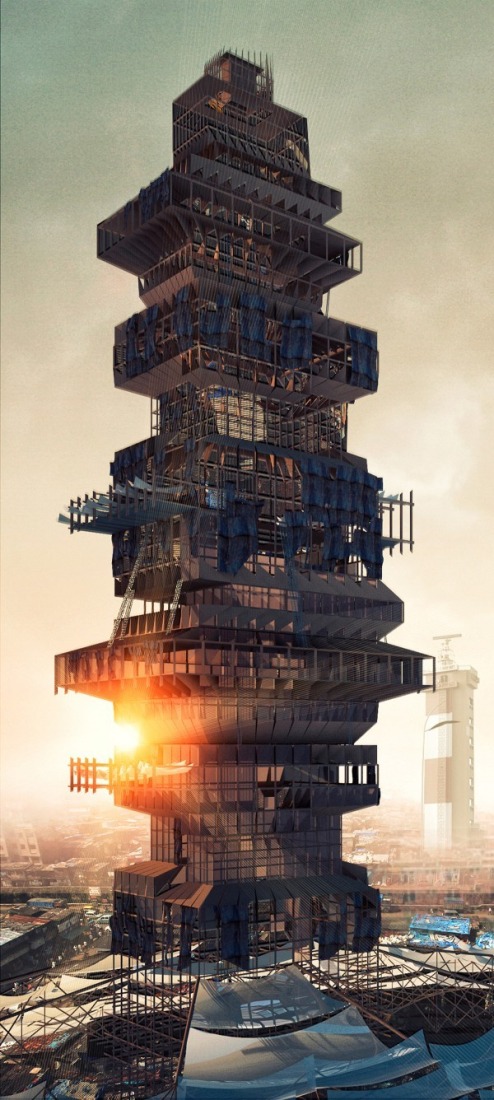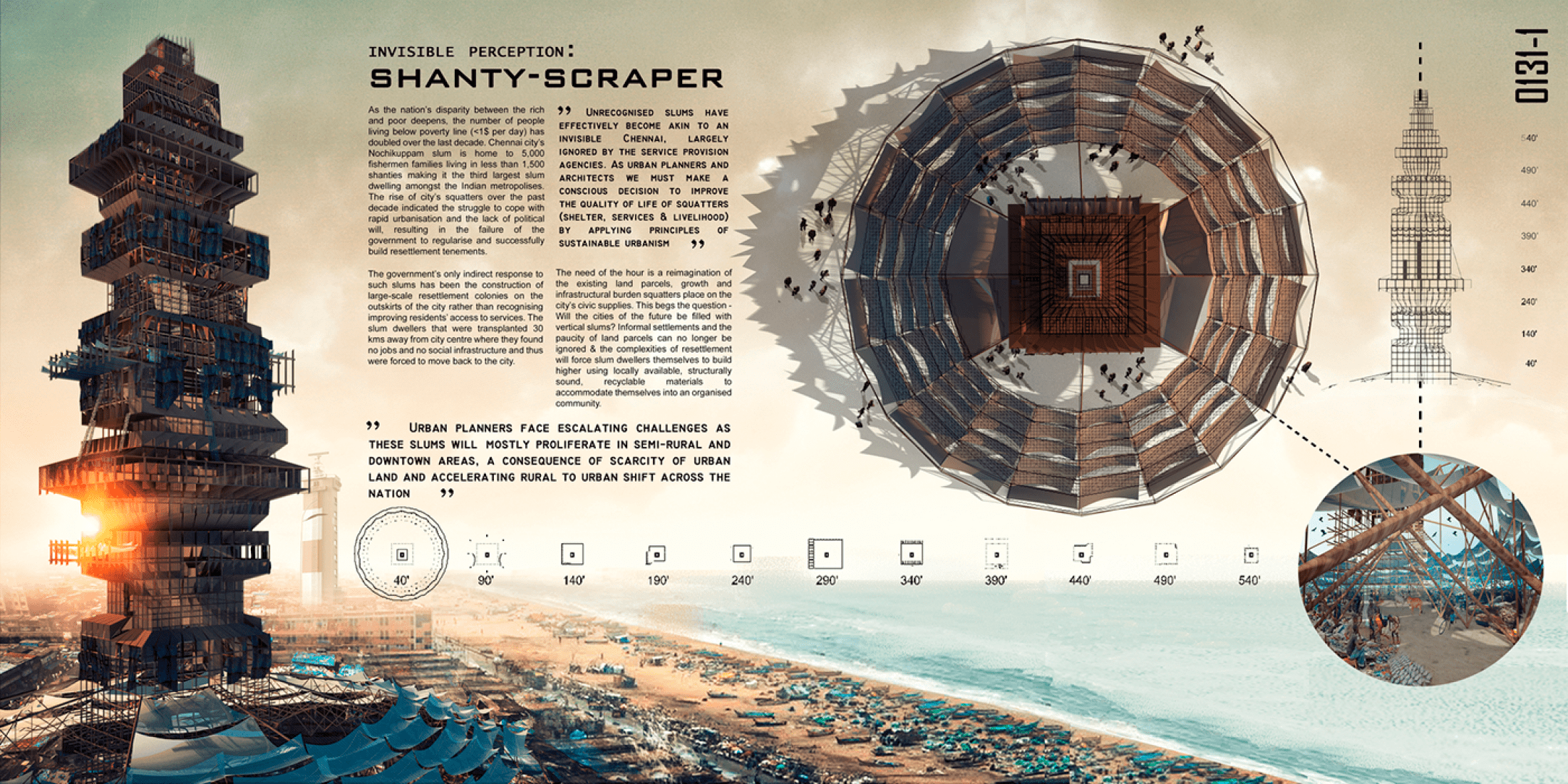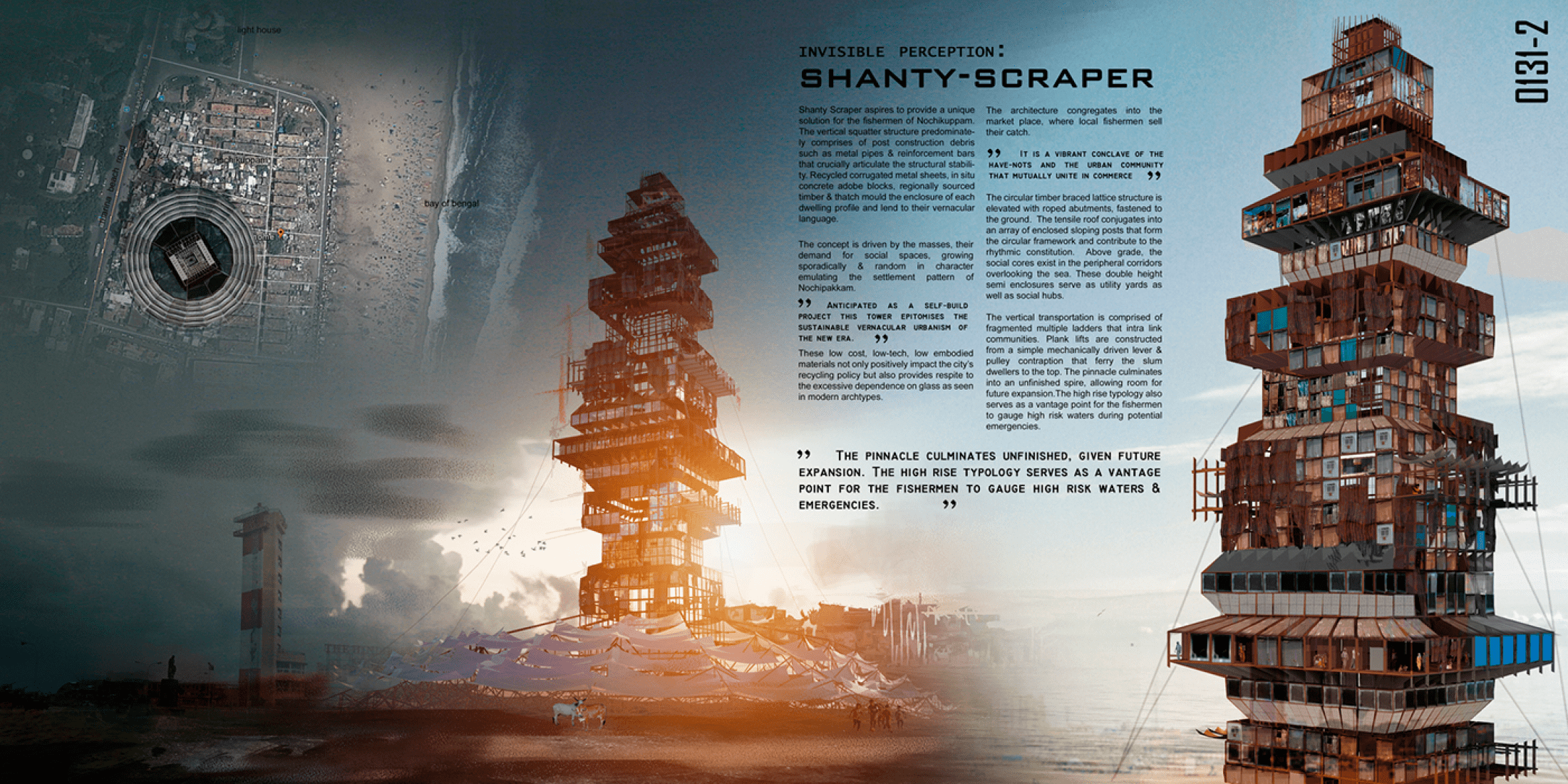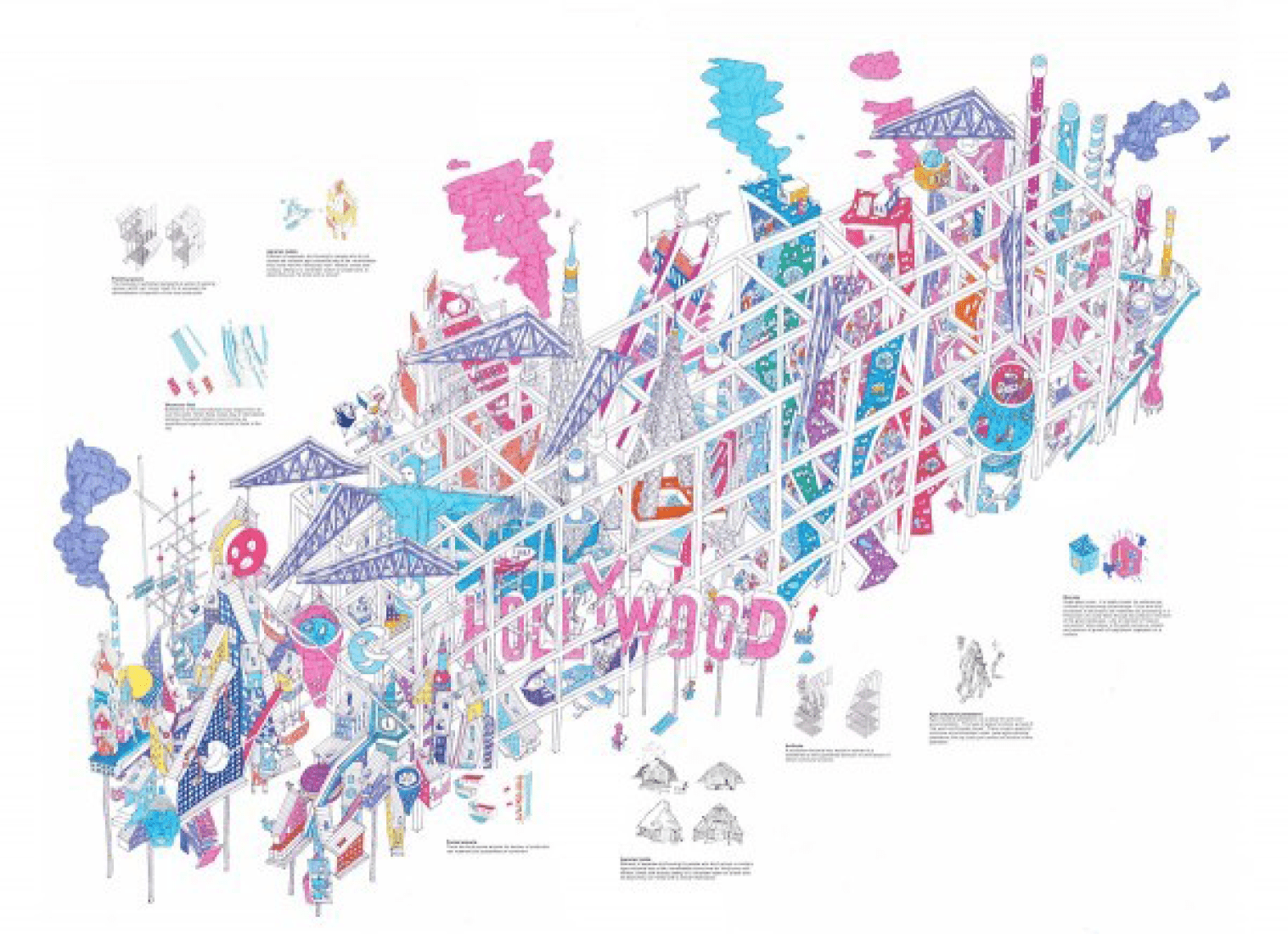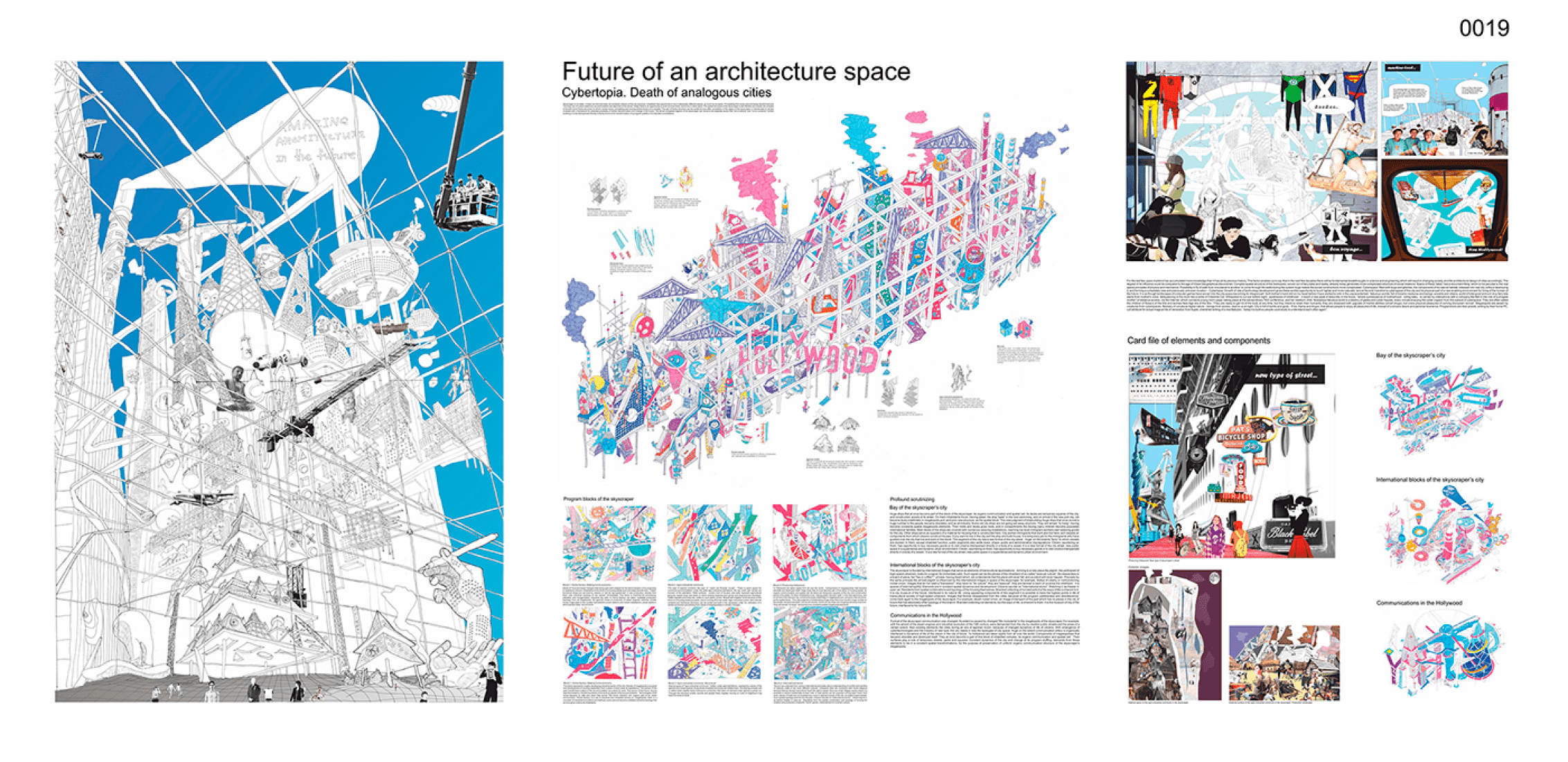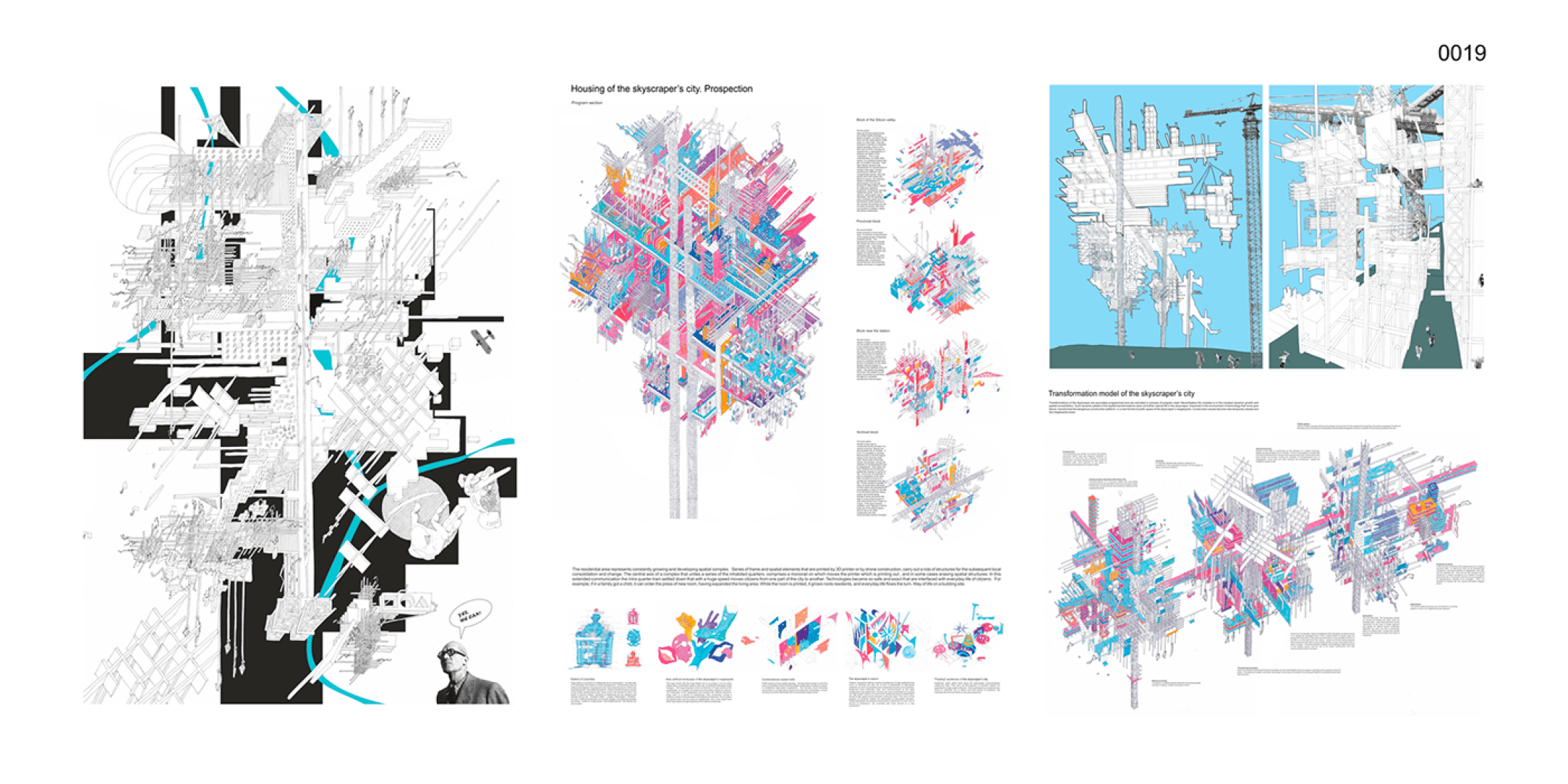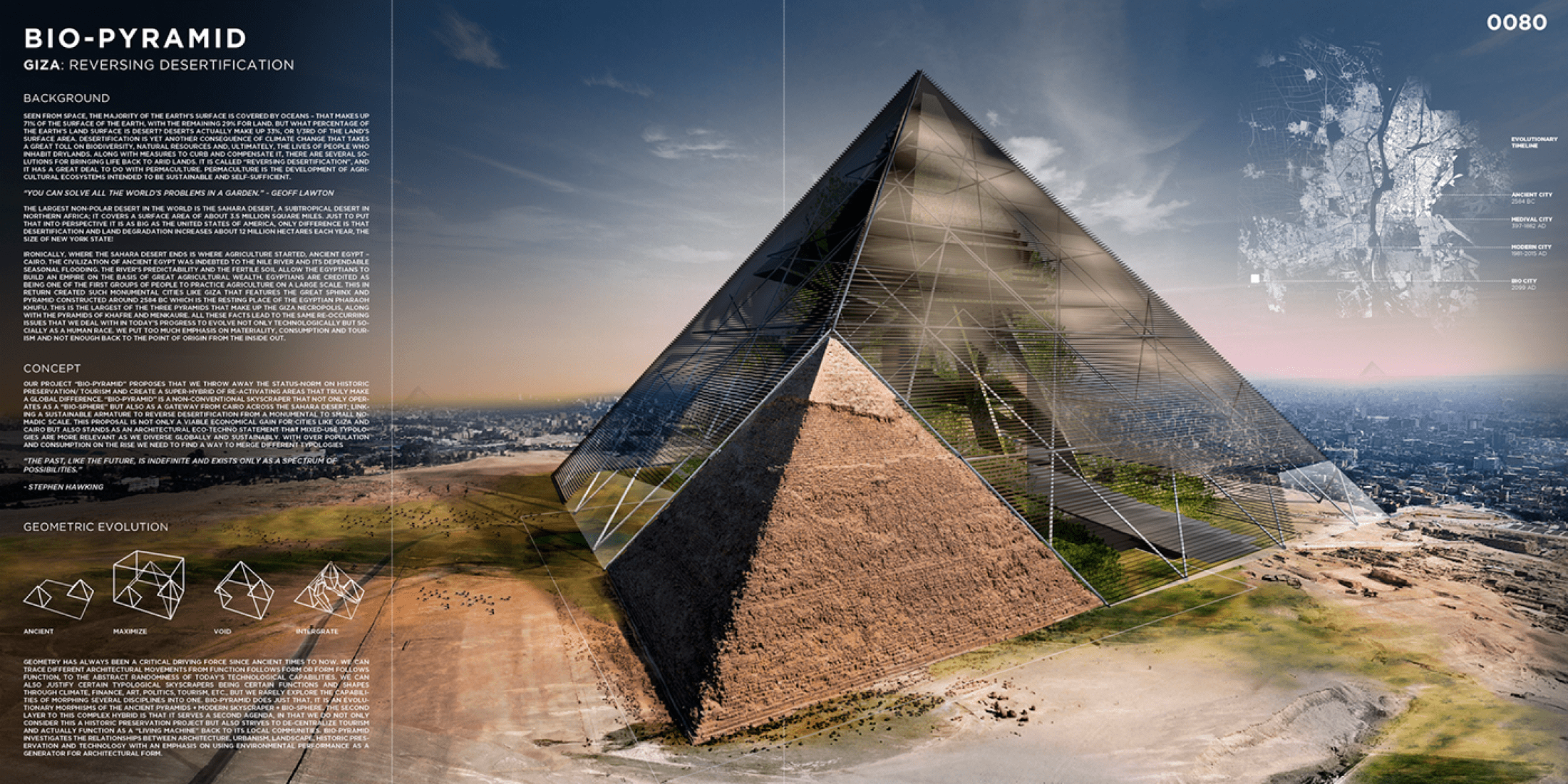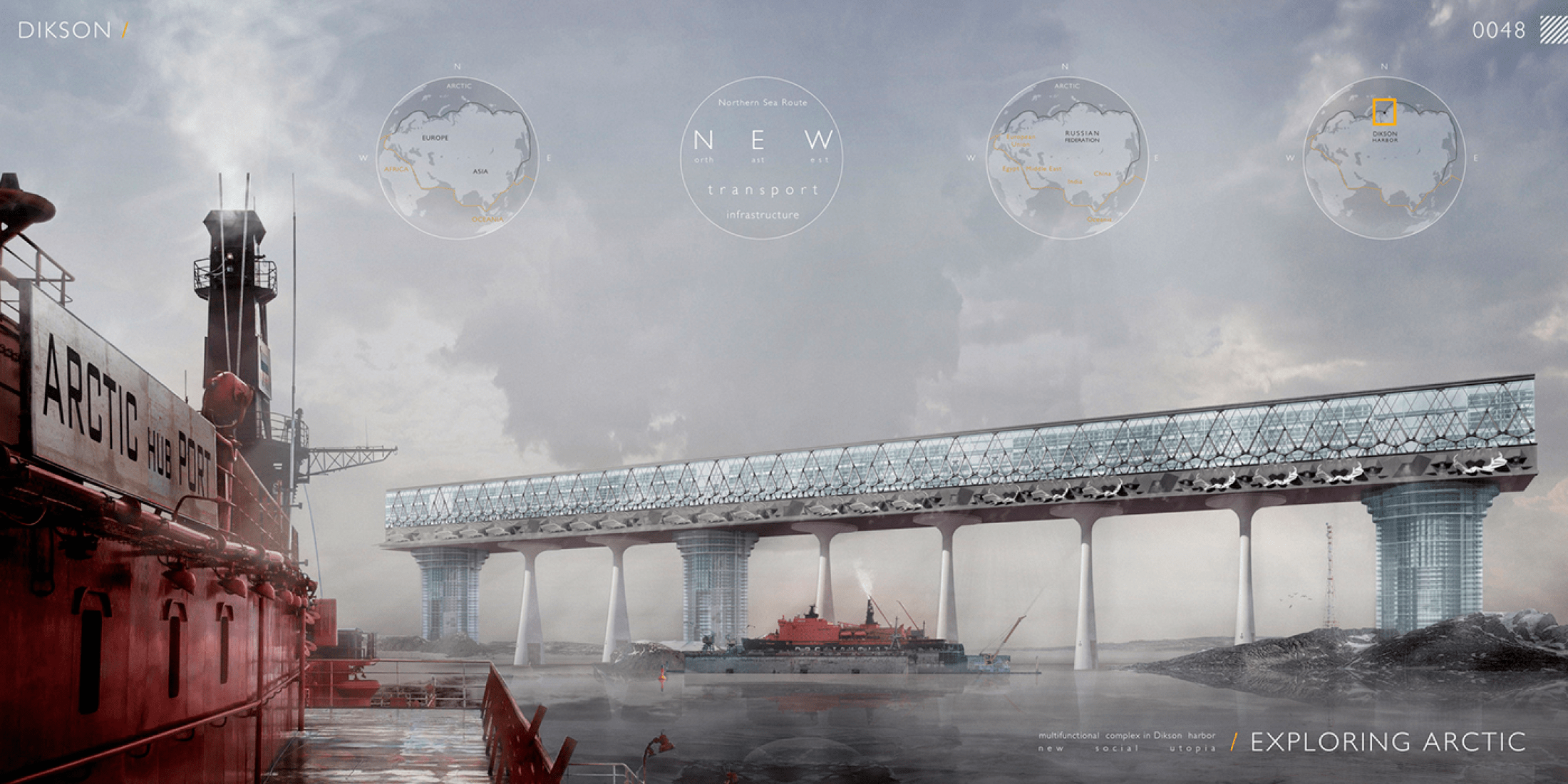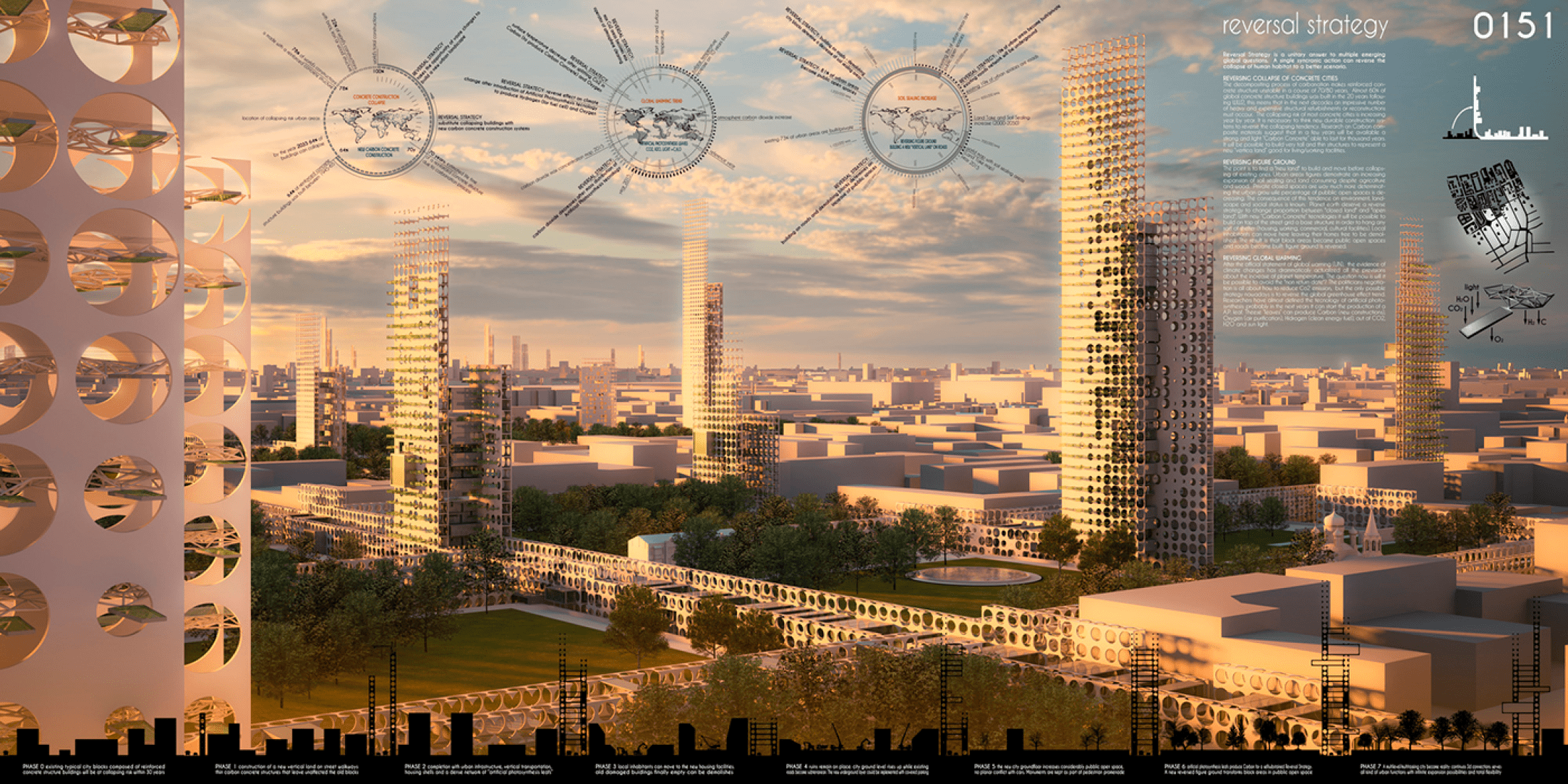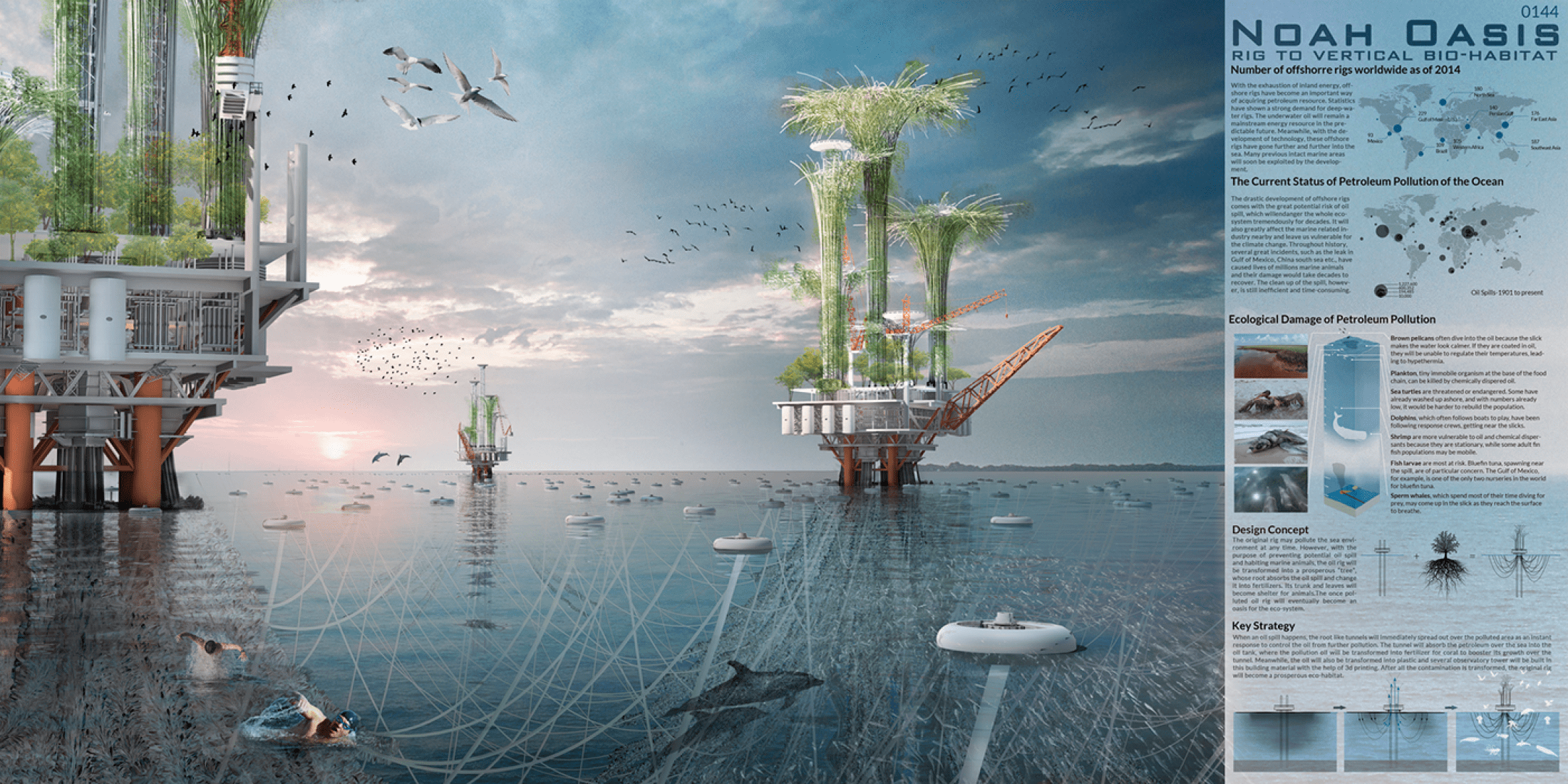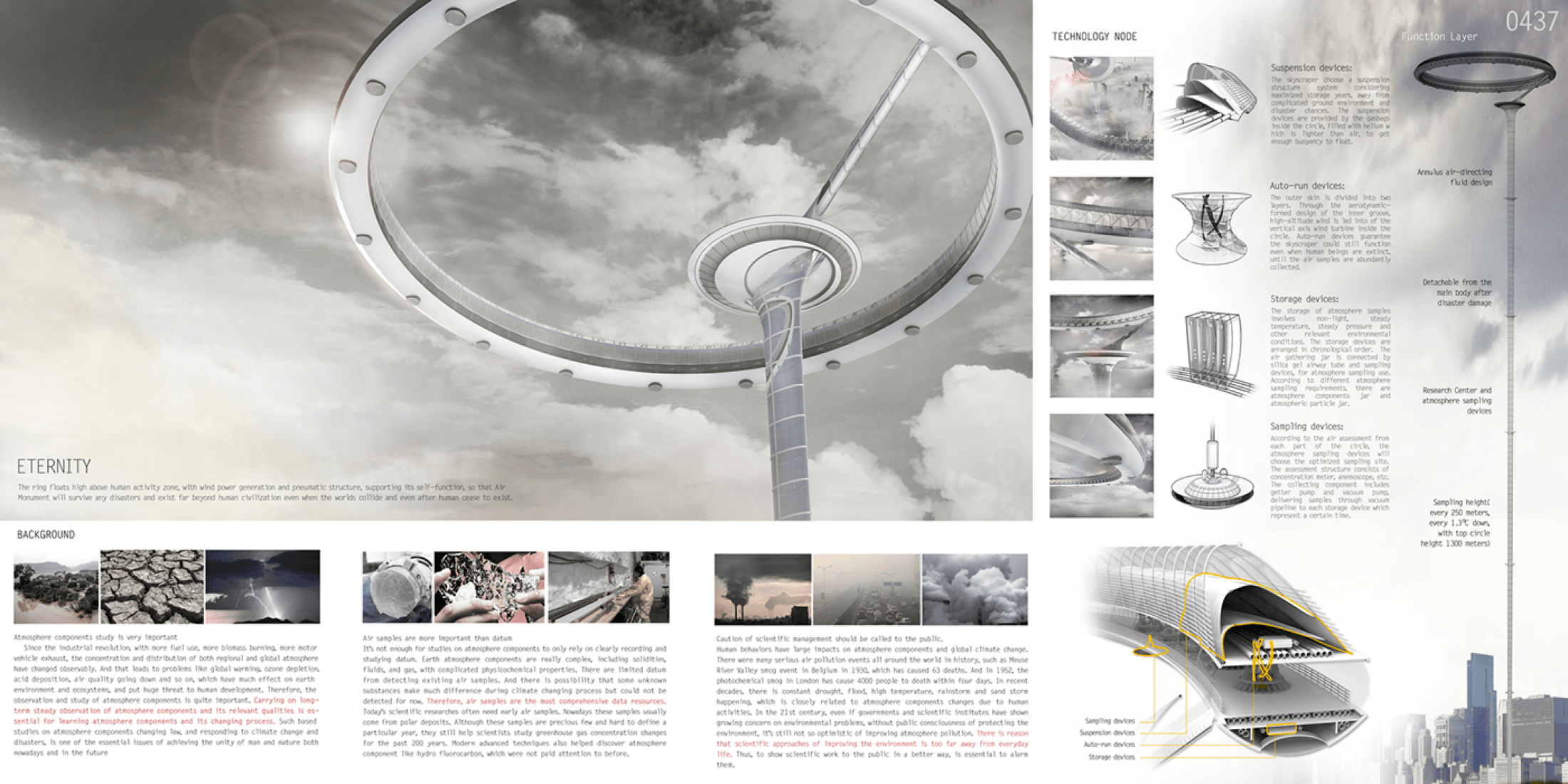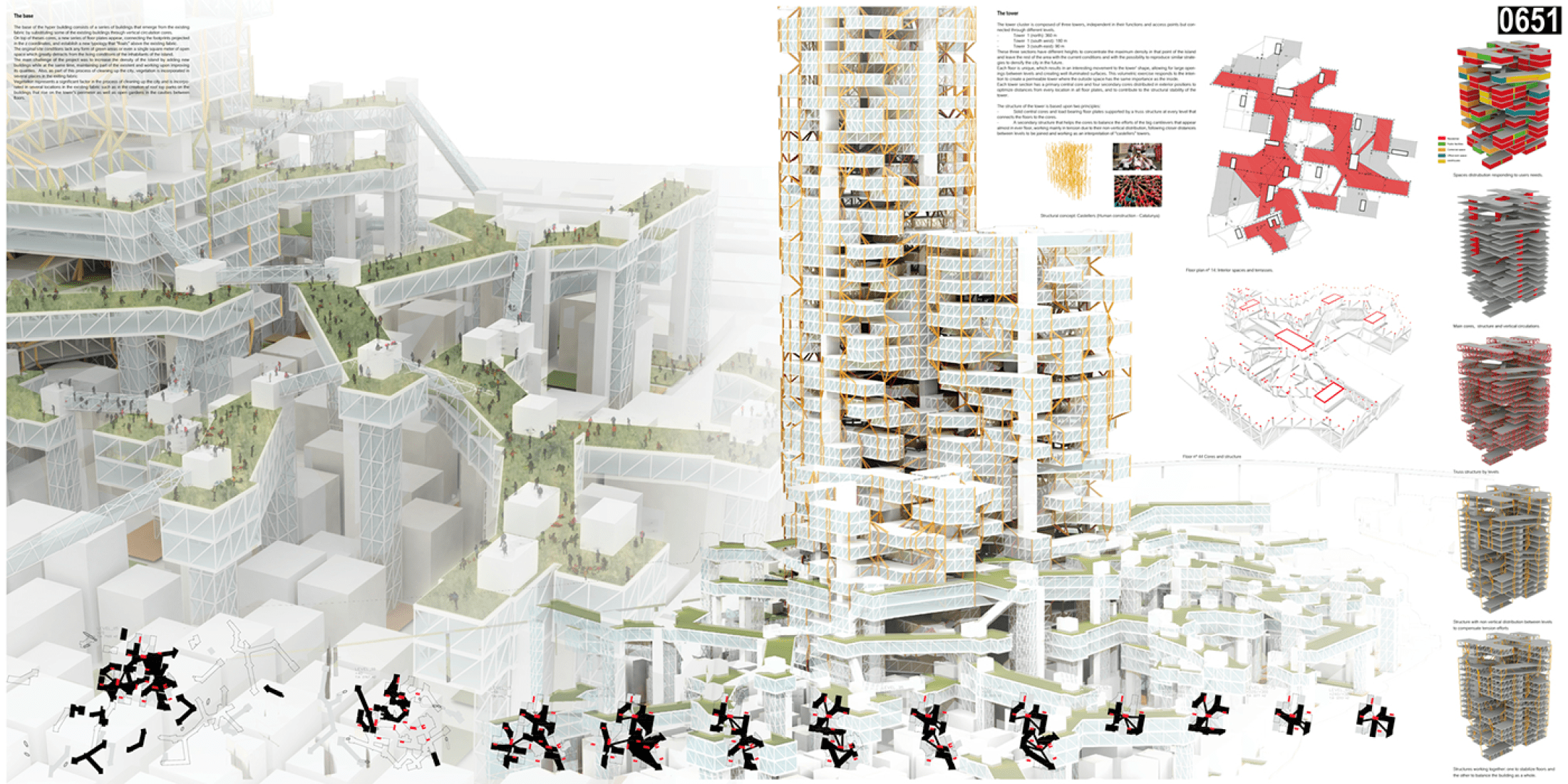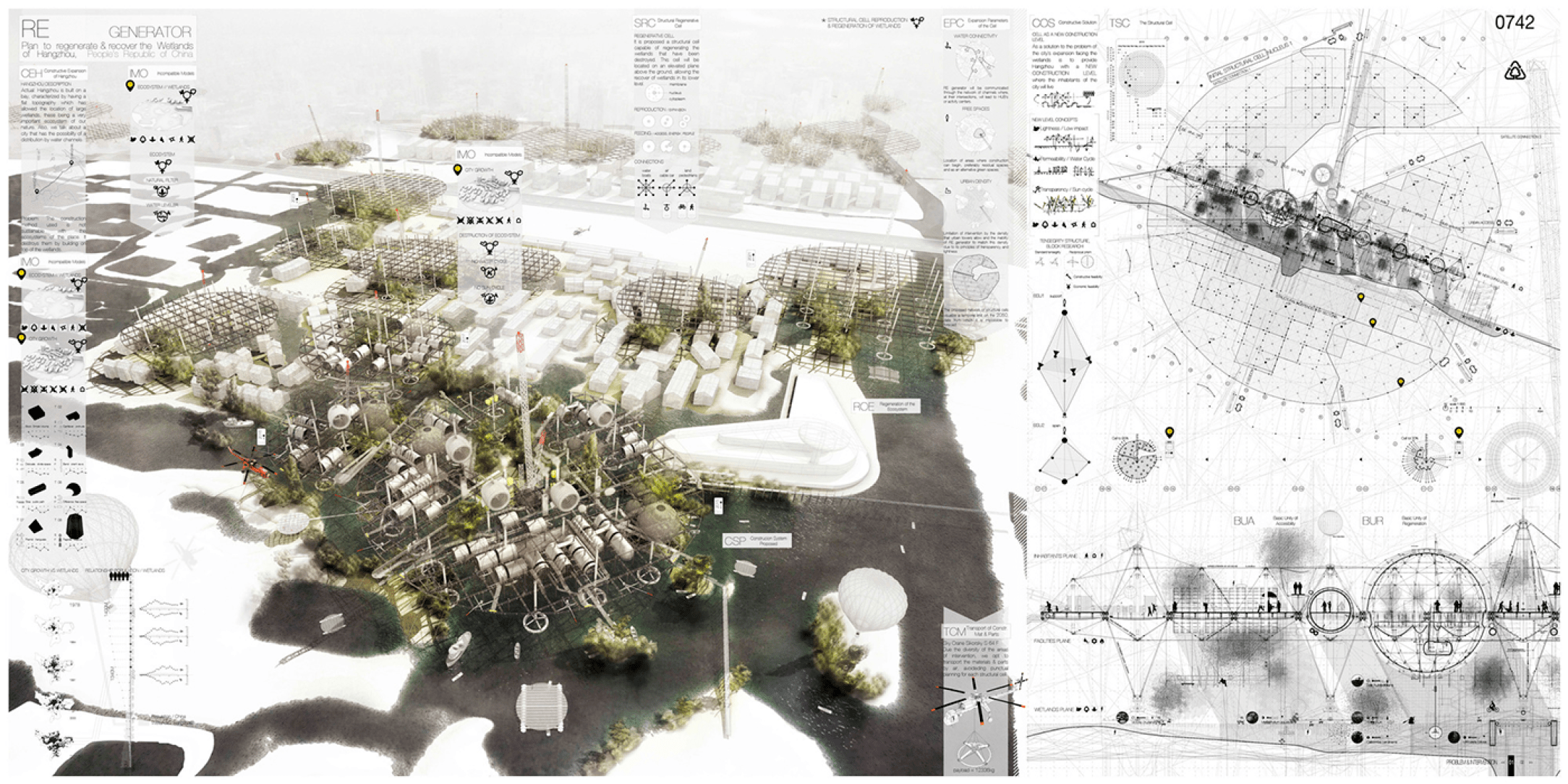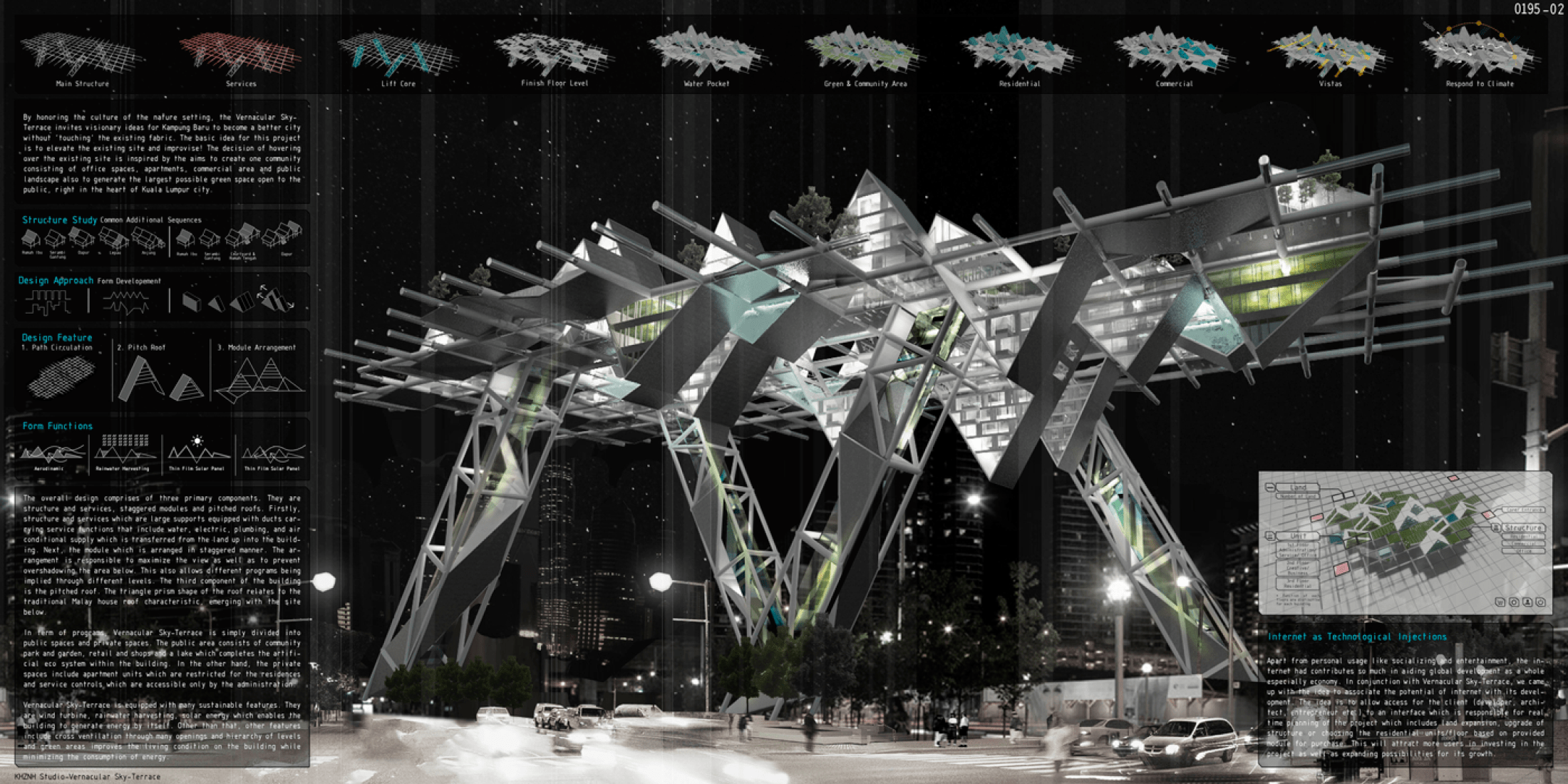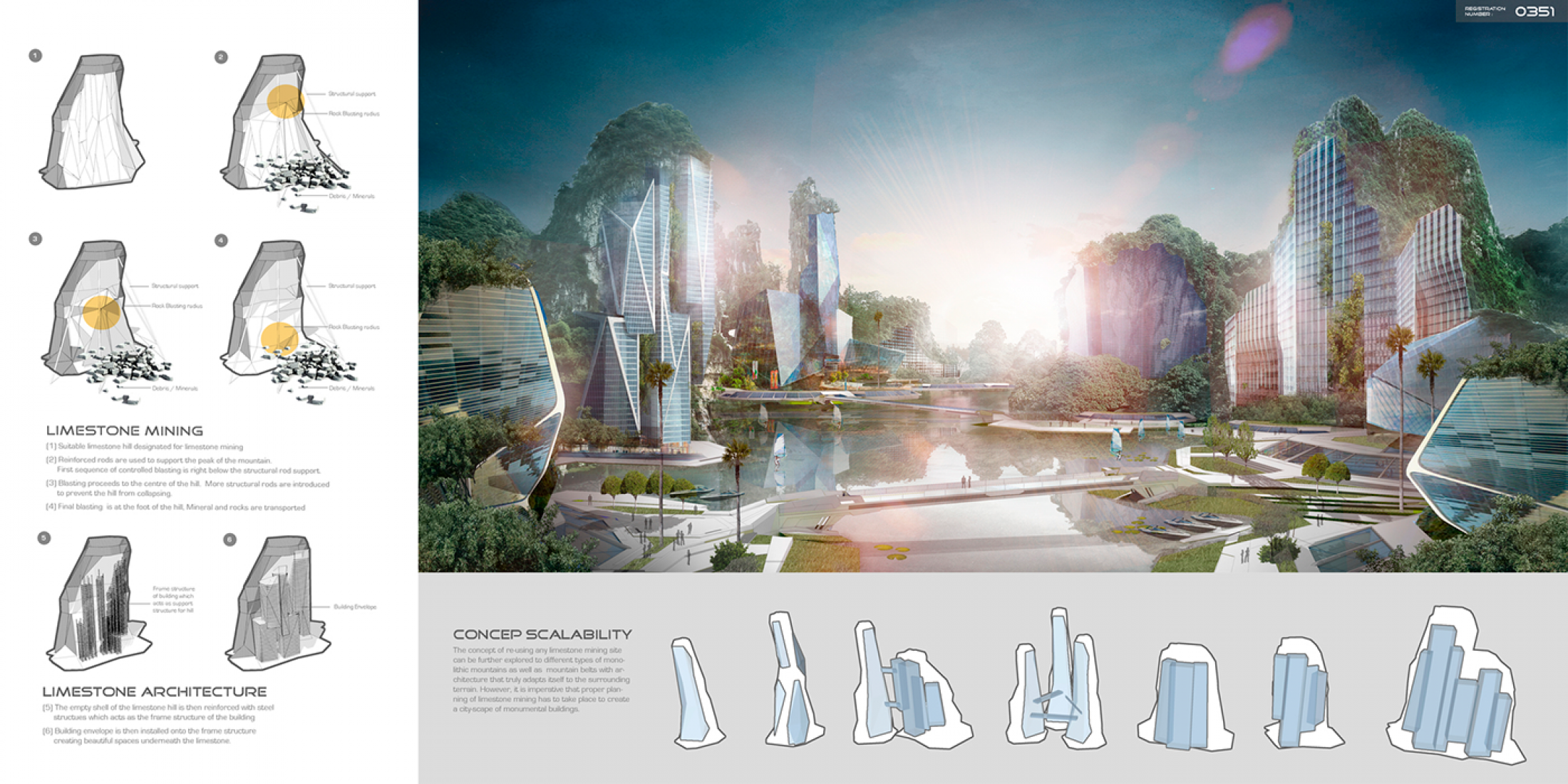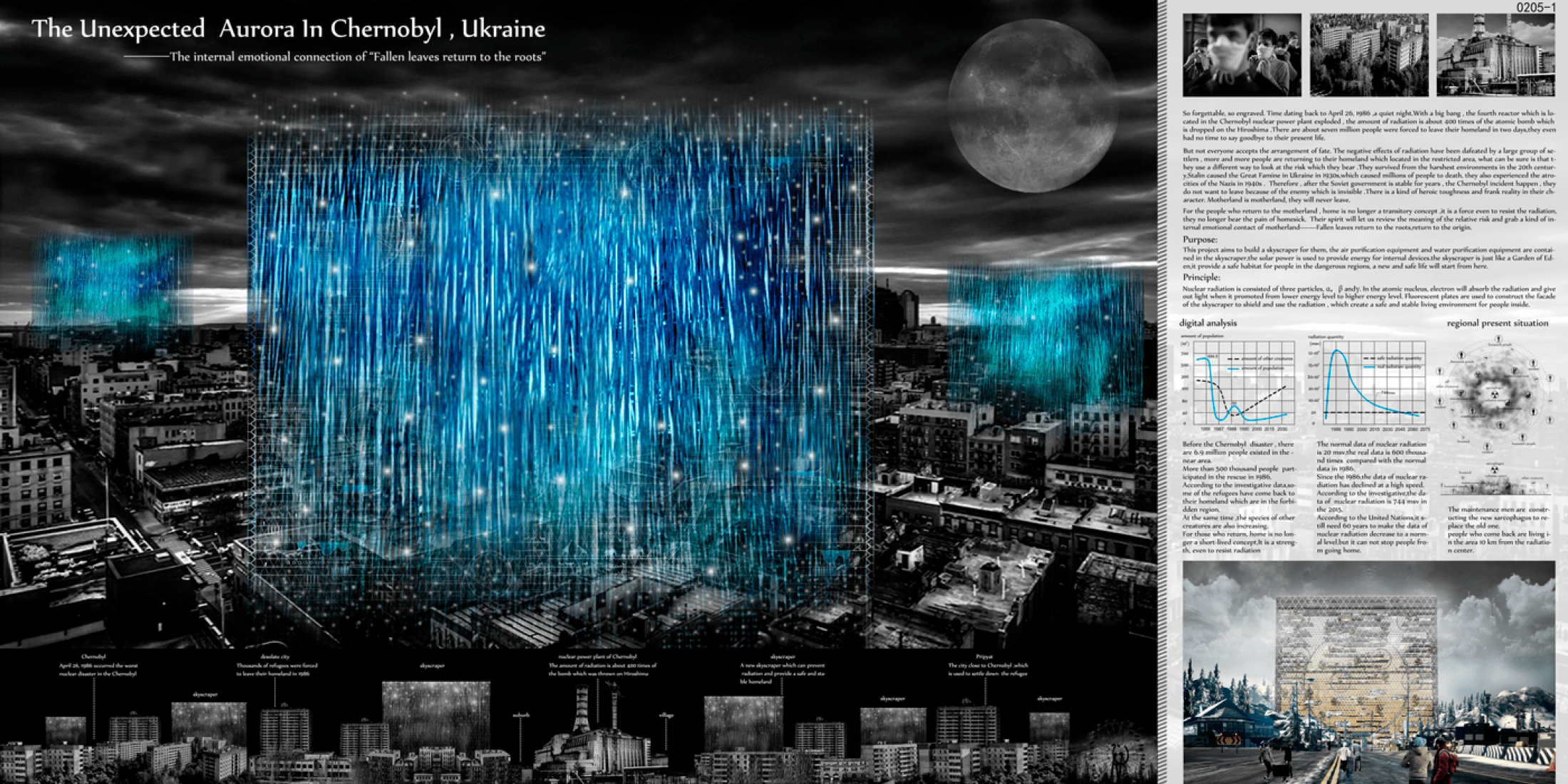In 2015, the Jury, formed by leaders of the architecture and design fields selected 3 winners and 15 honorable mentions. eVolo Magazine received 480 projects from all continents. The winners were selected for their creativity, ingenuity, and understanding of dynamic and adaptive vertical communities.
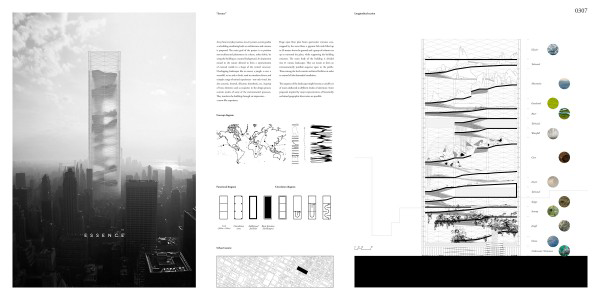
- The first place was awarded to BOMP (Ewa Odyjas, Agnieszka Morga, Konrad Basan, and Jakub Pudo) from Poland for their project Essence Skyscraper. The proposal is an urban mega-structure that contains diverse natural habitats. The skyscraper would serve as a place to briefly escape urban life and stimulate diverse and complex experiences.
Away from everyday routines, in a dense city center, a secret garden that combines architecture and a nature is born. The main goal of this project is to position non-architectural phenomena in an urban fabric. An inspiration rooted in nature allowed to form a representation of external worlds in the shape of a vertical structure. Overlapping landscapes like an ocean, a jungle, a cave or a waterfall will stimulate a diverse and complex range of visual, acoustic, thermal, olfactory, and kinesthetic experiences.
The main body of the building is divided into 11 natural landscapes. They are meant to form an environmentally justified sequence open to the public that includes extensive open floor plans that form spectacular spaces with water floors, fish tanks lifted up to 30 meters above ground, and jungle areas among others natural scenarios. The sequence landscapes might become a variable set of routes dedicated to different shades of adventure.
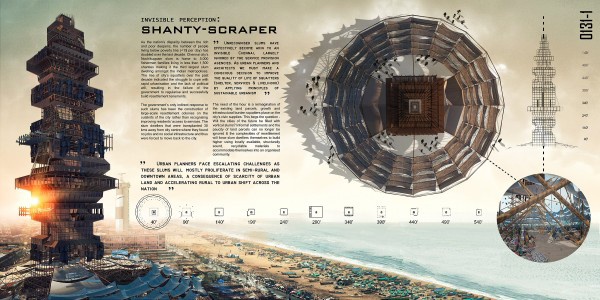
- The recipients of the second place are Suraksha Bhatla and Sharan Sundar from India for their Shanty-Scaper. The project seeks to provide housing, work and recreational spaces to the inhabitants of Chennai city’s slum in India. The skyscraper is designed to reutilize the city’s post-construction debris including pipes, corrugated metal sheets, timber, etc.
India’s Slum population is expected to surge to 104 million (9% of the national population) by 2017*. As the nation’s disparity between the rich and poor deepens, the number of people living below poverty line (1$ per day) has doubled over the last decade. Chennai city’s Nochikuppam slum is home to 5,000 fishermen families living in less than 1,500 shanties making it the third largest slum dwelling amongst the Indian metropolises. The rise of city’s squatters over the past decade indicated the struggle to cope with rapid urbanisation and the lack of political will, resulting in the failure of the government to regularise and successfully build resettlement tenements. The government’s only indirect response to such slums has been the construction of large-scale resettlement colonies on the outskirts of the city rather than recognising improving residents’ access to services. You can read the complete text here.
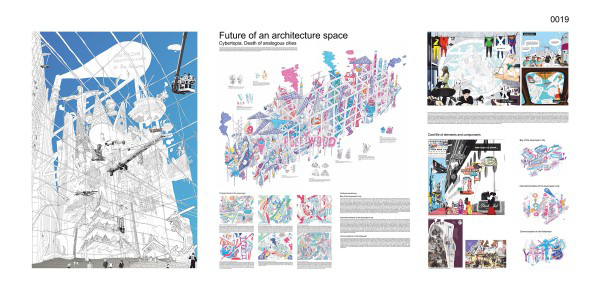
- The third place was awarded to Egor Orlov from Russia for the project Cybertopia which reimagines the city of the future as the combination of digital and physical worlds – a city that grows and morphs instantly according to our needs.
For the last few years mankind has accumulated more knowledge than in all its previous history. This factor enables us to say that in the next few decades there will be fundamental breakthroughs in science and engineering which will result in changing society and the architectural design of cities. The degree of its influence could be compared to the age of Great Geographical discoveries. A complex space structure of the future megapolis combines the physical and digital worlds. Spaces of these digital areas have a large number of physical and mechanical laws alien to real space. An ability to fly over or move from one planet to another one, to pass through the walls during system bugs makes the city more complicated. Cyberspace full of hallucination and bugs, components of its own habitat has moved into a real megapolis which is being formed and organized simultaneously in the digital and physical space. “Tomorrow” we expect a completely different topography of the city. It will be a map which includes cyber worlds with intrinsic geography, laws of physics, qualities and even its own residents. It is as though landscapes of computer games have woven into the city space becoming its integral part. You can read the complete text here.
The 15 honorable mentions include skyscrapers designed for the arctic, structures that intend to reverse desertification, abandoned oil rigs transformed into bio-habitats, and atmosphere laboratories among others.
The members of the Jury are: Massimiliano Fuksas [principal Studio Fuksas], Michael Hansmeyer [CAAD group at Swiss Federal Institute of Technology], Richard Hassell [principal WOHA], Alvin Huang [principal Synthesis Design + Architecture], Yong Ju Lee [winner 2014 eVolo Skyscraper Competition], Wenchian Shi [project manager MVRDV], Wong Mun Summ [principal WOHA], and Benedetta Tagliabue [principal EMBT Miralles Tagliabue].

